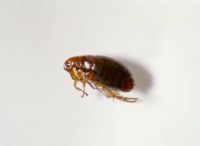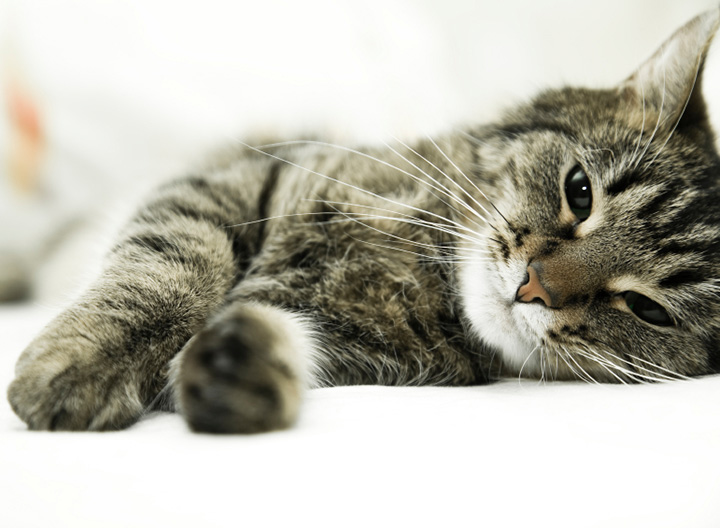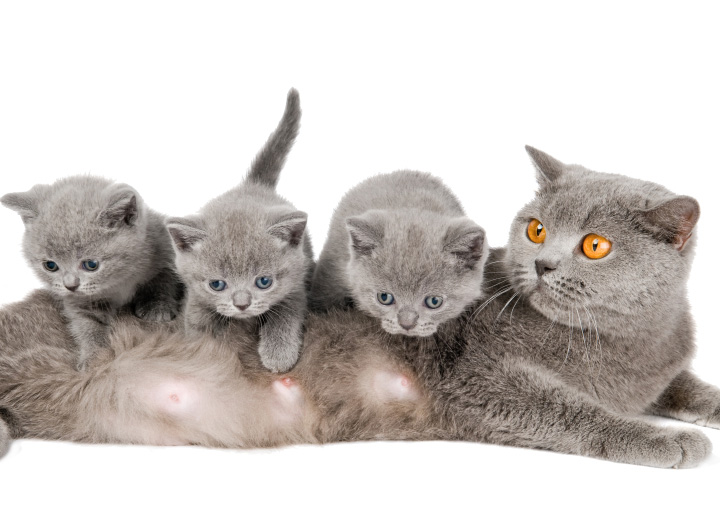Cats
"Dogs have owners, cats have staff" Anon
Vaccination
Vaccinating our cats against certain infectious diseases has greatly reduced their incidence. Nevertheless, these diseases are still present in the feline population and represent a very real risk.
Our feline vaccine protects against the following diseases:
- Viral Rhinotracheitis (Feline Herpes Virus)
- Calicivirus
- Panleucopaenia
- Feline Leukaemia Virus
The vaccine is injected under the skin in the "scruff" of the neck. A very small needle is used and many cats do not even feel it. Annual vaccination is required to keep your cat protected against all the diseases listed above. This is because antibody levels start to decline with time after your cat’s last vaccination.
We only use the latest innovations in cat vaccines, combining proven immunity with an extremely rare risk of any reported adverse effects.
In Weybridge and surrounding areas there is a high cat density which favours the spread of infectious disease. This makes vaccination even more important for our cats compared to cats in rural areas with low population densities.
Feline Herpes Virus and Calicivirus cause the debilitating and highly contagious "cat flu". Sneezing and discharge from the eyes and nose are seen and cats often stop eating. Feline Herpes Virus often causes ulcers on the cornea of the eye and Calicivirus causes ulcers on the tongue.
Cats infected with Feline Herpes Virus may remain carriers for life. The symptoms will recrudesce at intervals (as the human herpes "cold sore" recrudesces) and these cats often have recurrent episodes of conjunctivitis.
Hospitalisation of cat flu cases requires isolation and barrier nursing, as the disease is so contagious. In unvaccinated cats, flu can be fatal.
Panleucopaenia is caused by Feline Parvovirus, which targets rapidly dividing cells in the bone marrow and intestine, disabling the cat’s immune system and causing severe vomiting and diarrhoea.
Feline Leukaemia Virus is the most deadly of the viruses we can vaccinate against. It is a retrovirus which invades cells and causes blood cancers (leukaemias) as well as solid tumours in other organs. It is incurable and inevitably fatal.
Kitten Vaccination Courses
We advise the following kitten vaccination course:
FIRST VACCINE: 9 weeks old
SECOND VACCINE: 3-4 weeks after the first vaccine
You will be given a vaccination certificate
Neutering
Neutering male cats
A male kitten will usually reach sexual maturity at five or six months old.
You may notice him spraying vertical surfaces, associated with an unpleasant smell. This is the typical "Tomcat" territory marking.
When a male cat reaches sexual maturity, they are far more likely to roam large distances and as such are more at risk of R.T.As (Road Traffic Accidents). They are also far more likely to fight than neutered males, putting them at risk of cat bite abscesses and contracting FIV (Feline Immunodeficiency Virus) which is spread in saliva. FIV is the feline equivalent of HIV and devastates the cats immune system, leading to debilitating disease and ultimately death.
We strongly advise neutering male cats at 5-6 months old to prevent these risks. The castration procedure is a short operation with a very quick recovery time.
Neutering female cats
Female kittens reach sexual maturity around 6 months old. You may observe her showing signs of being "in season", for example vocalising persistently ("calling") and adopting the lordosis posture (bowing down and raising her bottom in the air).
These signs may not be noticeable in some cats but are more obvious in others, particularly oriental breeds.
We advise all owners to have their female kitten spayed at 6 months old. This prevents unplanned pregnancies and also protects your cat’s health. Many male un-neutered toms are strays carrying diseases. During the mating process, the male often bites the female on the scruff of the neck and this can transmit FIV (Feline Immunodeficiency Virus) which is spread through saliva.
Even if your female is an indoor cat and thus at no risk of pregnancy or FIV, neutering prevents her from developing diseases or tumours associated with the reproductive organs. For example pyometra (a life-threatening infection of the uterus) is very common in older un-neutered females and mammary tumours (breast cancers) are almost exclusively seen in un-neutered queens.
Intestinal Worms
Roundworm
Kittens may be infected with the roundworm toxocara when they drink their mother’s milk. If the mother has ever been infected during her lifetime (and most cats will have been) then toxocara larvae can remain from 6 weeks of age. Roundworm causes lethargy, bloating, and weight loss. If your kitten is constantly ravenous and has a "pot belly" she may have roundworms. And whilst the disease is rare in humans, it can cause eye damage resulting in blindness. Cats can pick this worm up from contaminated soil and eating prey.

Picture Above: Toxocara cati (the cat roundworm)
Tapeworm
Adult tapeworms can grow up to 60cm in length inside a cat’s intestines. Cats are infected by Taenia tapeworms when they hunt and eat infected rodents carrying tapeworm cysts. Dipylidium tapeworm cysts are carried by fleas and the cat is infected when grooming fleas off the body and accidently ingesting them.
The adult tapeworm releases segments that are shed from the cat’s anus and can cause irritation around this area.
Worming a cat
Many cat owners have had disastrous experiences trying to administer a worming tablet to their cat. Except for a few amenable felines, the procedure can be at best stressful and at worst dangerous!
Cats should be wormed every 3 months as adults. Whenever your cat is brought to the practice for a booster, consultation or nurse clinic, we are happy to administer a worming tablet for you.
However, worming your cat at home is now a lot easier, thanks to a "spot-on" preparation called "Profender" can now be applied to the skin on your cat’s neck. This product treats all intestinal worms, including tapeworms, and is applied every 3 months. You can use your normal "spot-on" flea control as well, but it is preferable to leave 1 week between the two products.
Fleas
Fleas have become a year-round problem since central heating ensured our houses are always warm enough for their life-cycle.

Picture Above: The cat flea Ctenochephalides felis (not actual size!)
Cats with fleas are itchy and the hair on their back towards the tail may become blunt and coarse from licking. Some cats may cause trauma to their skin.
You may see adult fleas but often only the "flea dirt" (flea faeces) is visible when you part the hair. It is possible to distinguish "flea dirt" from other dirt by performing the "wet paper test". Wet paper rubbed onto ordinary dirt will leave small dirty marks whereas flea dirt will leave red trails (your cat’s blood!).
Some cats are hypersensitive to flea saliva and become intensely itchy after even one flea bite. These cats often have tiny crusting scabs all over the skin along their back (which feel like sandpaper) and alopecia on their stomachs and the back of their hind-legs. This syndrome is termed "Flea Allergic Dermatitis" (FAD). Some cats with flea hypersensitivity get red swellings on their lips or chin, a lesion called "Eosinophilic granuloma".
In young kittens, heavy infestations of fleas can cause anaemia due to blood loss.
Fleas can also transmit Feline Leukaemia Virus between cats. This is an aggressive retrovirus which causes leukaemia and other cancers. The red blood cell parasite Mycoplasma haemofelis is also spread by fleas and causes anaemia, weakness, depression and inappetance in infected cats.
Prevention and treatment is achieved by applying a spot-on preparation to the skin on the back of your cat’s neck. There are several veterinary-approved products available but be wary of some spot-on products available in pet shops and supermarkets. Most of these imitators are ineffective and some can actually cause lesions on your cat’s skin.
We advise our clients to use "Frontline Combo" (or other veterinary approved spot-ons) to prevent and treat fleas in their cats. After application, the drug will spread over the entire surface of the skin within 24 hours and all adult fleas should be killed within 48 hours. The drug remains effective in preventing new infestations of adult fleas on your cat for 4 weeks.
Unfortunately, in some cases the fleas you see on your cat can be the tip of the iceberg, as many will be living in your pet’s bedding, in carpets and in any nook or cranny. Female fleas can lay 50 eggs a day in your pet’s coat. The eggs then drop to the ground where they hatch and develop in your carpet or flooring. For every adult flea you find on your cat’s coat, there may be up to 100 living in your home!
Female fleas lay eggs as they wander through the fur. These eggs drop to the ground where they hatch and develop. This can happen very quickly in warm, muggy weather. But if it is cold (or very dry), they can remain dormant for a long time, becoming active when it warms up. These new fleas will jump onto your pets (or sometimes even you) when they develop. This is why people often discover a flea problem when they switch the central heating on in late autumn. Dormant fleas (in the form of pupae) are stimulated into activity by the warmth.
The environmental infestation will not occur if your cat is treated with "Frontline" regularly. However, if you are unfortunate enough to have fleas in your home, simply treating your cat is often inadequate. You will need to use an insecticidal spray such as "Acclaim" around your home, in addition to vacuuming and washing bedding.
"Frontline Combo" is superior to normal "Frontline" as it contains an extra ingredient which persists on your cat’s coat and sterilises fleas, preventing breeding and making infestations of the home less likely.
stgeorgesveterinarycentre@gmail.com | 01932 858890 | Find Us






